Reykjanes has all kinds of interesting museums that have a deep connection to the area.
Most of them are pretty standard but others are dedicated to more abstract things, such as Vikings, Rock ´n roll, nature, and other curious phenomena.

Reykjanes Art Museum
Reykjanes Art Museum presents several new art exhibitions every year. The museum is located in Duus Museum, the Art and Cultural Center of Reykjanesbær along with Reykjanes Maritime Center and Reykjanes Heritage Museum.
Reykjanes Art Museum presents visual arts through diverse exhibitions, lectures, guidance, publications and their website www.reykjanesbaer.is/listasafn.
The museum is open everyday from 12pm – 5pm.
View

Reykjanes Museum of Heritage - Stekkjarkot
Stekkjarkot is a classic example of the roughly built turf, stone and timber cottage-type houses once common on the Reykjanes peninsula and other coastal areas of Iceland, Stekkjarkot was opened to the public in 1993 by Iceland’s then-president Vigdís Finnbogadóttir, following a year of restorations.
The older part of the cottage, with its open hearth, dates back to the 19th century, and is said to have been home to a maidservant with an infant daughter who slept on the earthen floor. The newer part dates from the farm’s last days of habitation, by which time floorboards covered the living room and kitchen, a coal-fired stove provided both cooking facilities and heat, and conditions for those who lived there do not seem to have been too bad.
Stekkjarkot is open on request and there is free admission.
Please contact byggdasafn@reykjanesbaer.is for further information.
View
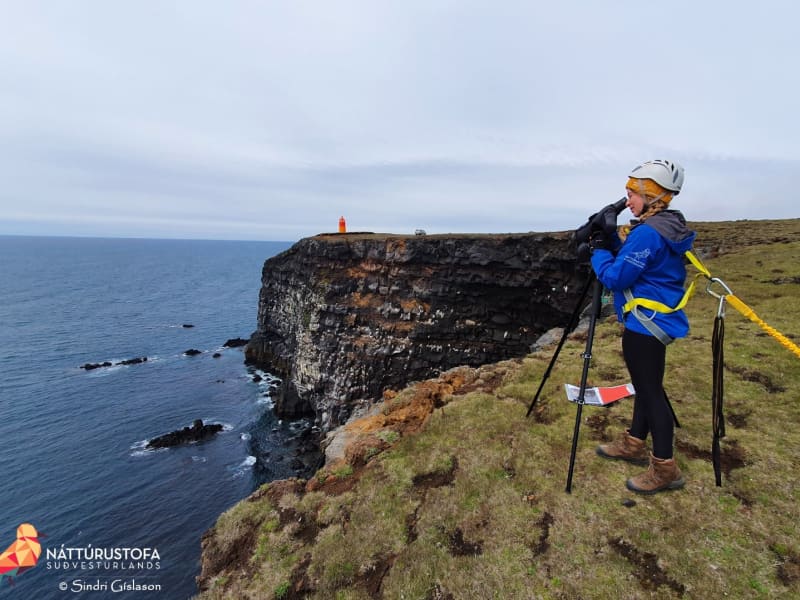
Southwest Iceland Nature Research Centre
Southwest Iceland Nature Research Centre is a regional institute of natural research and is based in Sandgerði. It was established in the year 2000 and is one of eight regional Nature Centres in Iceland.
The institutes main focus is on ecology of marine invertebrates, exotic species in Icelandic waters, avian studies, and shoreline monitoring. The centre is also involved in various teaching programs for all educational levels.
Southwest Iceland Nature Research Centre shares research facilities and housing with The Sudurnes Science and Learning Center and The University of Iceland‘s Research Centre in Sudurnes and are many of the researches done in collaboration between the institutes.
View
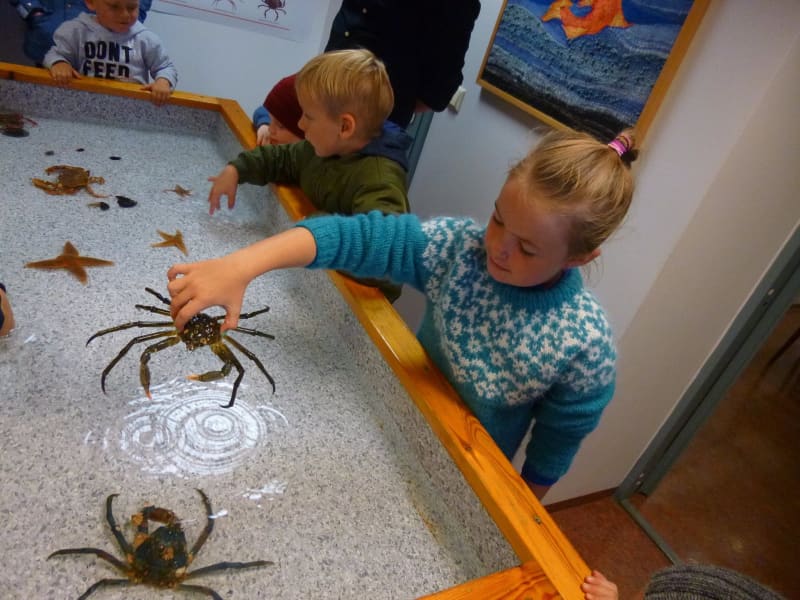
Sudurnes Science and Learning Center
If you are interested in the Icelandic nature and wildlife, sea creatures, research related to the area and art, the Sudurnes Science and Learning Center is a place you must visit!
The center offers three exciting exhibitions. They include a nature gallery where you can look at and touch various stuffed animals from the Icelandic wildlife and see live sea creatures. There is also a collection of shells and whale bones in addition to the only stuffed walrus in Iceland.
In the historical gallery you can visit the magnificent exhibition Attraction of the Poles on the life of the French medical doctor and polar scientist Jean-Baptiste Charcot. A model of his research ship, Pourquoi-Pas?, that perished off the coast of Iceland in 1936 is part of the exhibition.
In the art gallery you will find the art and educational exhibition Hidden World of the Seaweed Fairies. The exhibition weaves scientific knowledge about the ocean into the magical world of the seaweed fairies.
Sudurnes Science and Learning Center is an ideal place to visit for families and others hungry for knowledge. Join our treasure hunt that will take you on an exciting journey looking for various animals, plants and historical places. Bring your findings back to the Center for further research.
Opening hours
Summer (May 1st – August 31st)
Monday – Friday: 10:00 to 16:00 Saturday and Sunday: 13:00 to 17:00
Winter (September 1st – April 30th)
Exhibitions closed.
Flexible opening hours for groups (minimum 20 persons) year-round – please call 423-7555.
For further information see their website.
View
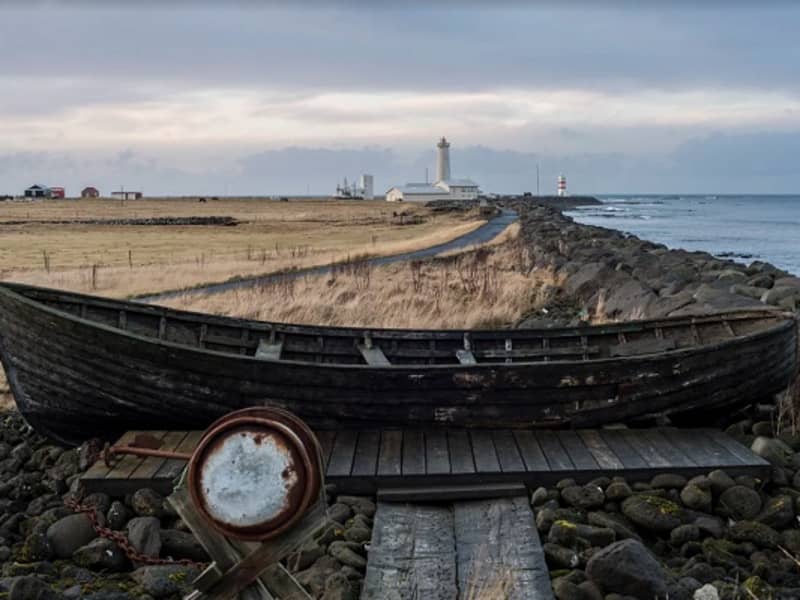
Folk Museum in Garður
The municipal museum in Garðskagi is located in a natural paradise, which blends the beauty of the landscape with its rich animal and birdlife.
The museum was first opened in November 1995 in the old processing houses in Garður. The museum has both a Folk and Maritime Museum. It has an outstanding engine collection of Guðni Ingimundarson. There are over 60 engines on display and almost every one of them is functional. Many important items from the municipal history of Garður are located in the museum, items which were essential for the livelihood on both land and sea The Museum is a great point of interest for visitors as it tells the story of how fishing developed and the history of the people who lived and worked in the community. A restaurant and camping site with facilities is on-site and if you are lucky you might see dolphins and whales near the shore from the terrace of the restaurant.
Summer opening is 10-17 From the 1st May - 30. Sept.
From October the Museum can be booked for groups.
View
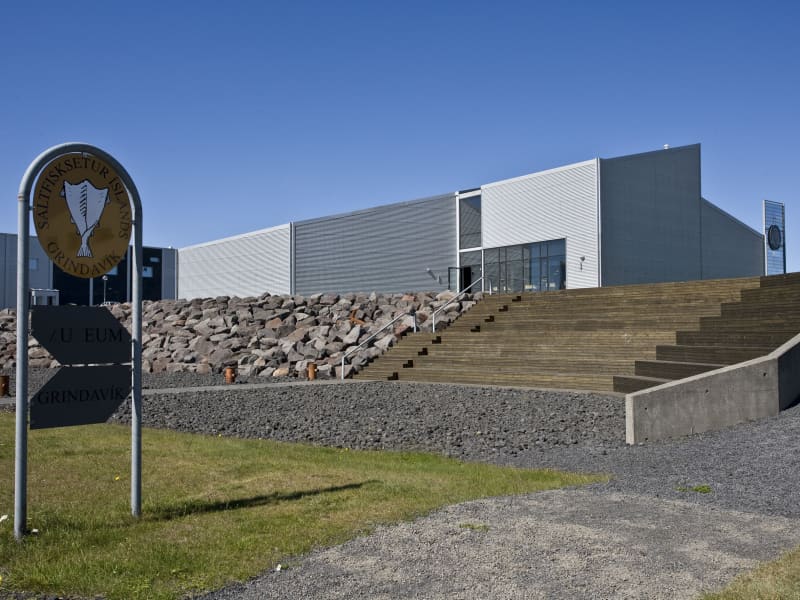
KVIKAN - House of Culture and Natural Resources
Kvikan is the cultural house of Grindavík. Diverse cultural activities take place in Kvikan e.g., events, performances, lectures, choir rehearsals and so much more. Kvikan announces its events on its Facebook page.
On the second floor of the building is the exhibition “Saltfish in the history of the nation”. The exhibition should be interesting for foreign tourists, informative for schoolers, and enjoyable for all who want to know about the industry here.
As the 18th century progressed, and deck ships began to replace rowing ships, salted cod became Iceland's main export. Until then, wading and crawling had been the basis of foreign trade. With the advent of trawlers, salted cod processing became an important industry, and salted cod has ever since played a very significant role in the economy's performance. The exhibition takes you through the history of the salted cod and lets you experience the journey of all the stages involved to make and transport the product.
Informative:
Texts in the exhibition are in both Icelandic and English
Coffee and tea (including bathroom fee) – 250 kr.
Bathroom fee – 100 kr.
No entry fee for the exhibition
Opening hours
15. May – 31. August Every day from 11:00am – 17:00pm
1. September – 14. May Everyday but Sunday from 11:00am – 17:00pm
It is also possible for groups to come outside of opening hours by arangement.
View
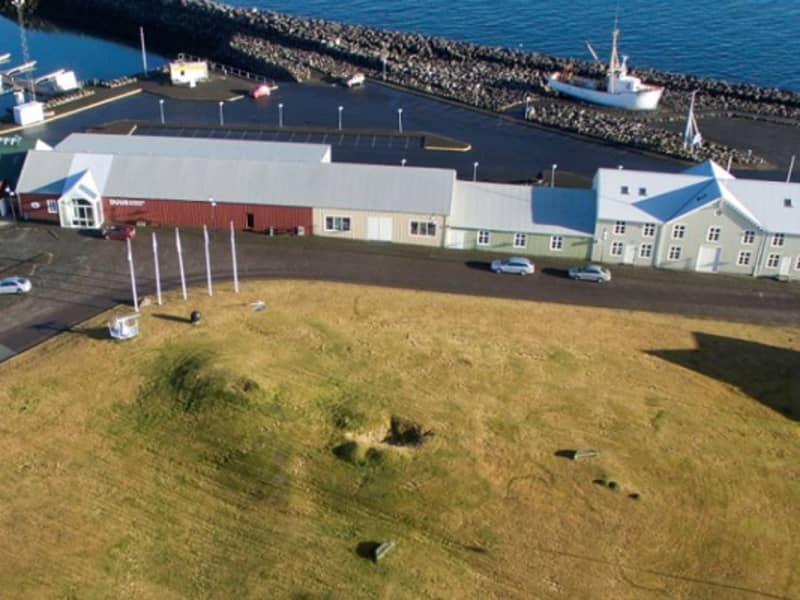
Duus Museum - Cultural Center
Duus Museum is the Art and Cultural Center of Reykjanesbær where you can experience diverse exhibitions and cultural activities all year round. The museum houses exhibition halls for the Art Museum of Reykjanesbær and Heritage Museum of Reykjanesbær which offer new and exciting exhibitions throughout the year. Reykjanes Geopark Visitor Center are also located in the museum.
Closed Mondays - open 12:00-17:00 tuesday to sunday.
View
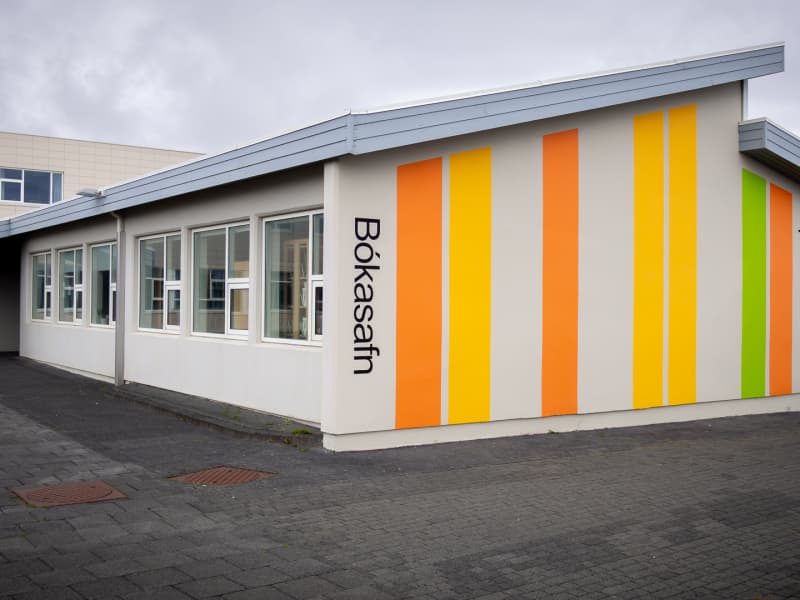
Public library Suðurnesjabær
The Public library in Suðurnesjabær is located nex to the swimming pool in Sandgerði.
View
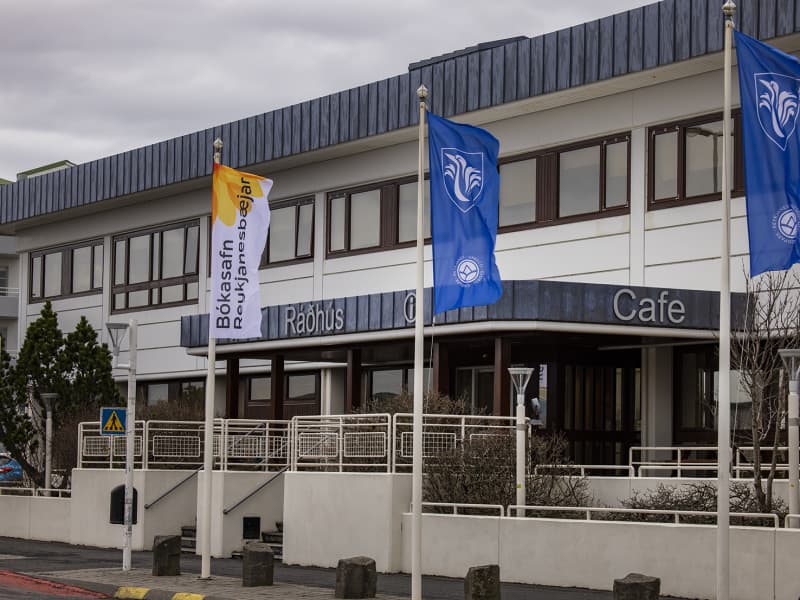
Reykjanes Public Library
The Reykjanesbær library is located at Tjarnagata 12, sharing the building with the Reykjanesbær town hall as well.
The library’s opening hours are between 9 a.m. to 6 p.m. on weekdays and 11 a.m. to 4 p.m. on Saturdays during winter. The library is closed on Saturdays during the summer (June-July-August).
On the first floor, you’ll find the reception, fiction, biographies, the children’s section, and magazines as well as being overall more open to conversation and socializing. Moving to the lower floor you’ll find the library’s reference service as well as a reading room, and study desks and is generally intended for activities requiring more calm and quiet environments. The library offers free wi-fi.
The Reykjanesbær library is the cultural centre of the town. Its aim is to provide its residents with access to a diverse collection and information through various formats. The library aims to support the growth of cultural and scientific development of the community as well as education, lifelong learning, employment, Icelandic language, reading for pleasure and information literacy. The library aims to create a “third place” in addition to the home, work and school. Every child under eighteen receives a free library card.
The library staff organizes many different events such as the book club, creative workshops focused on various handicrafts, and cosy social events for families with young children featuring the reading of children’s books. The group Women of the World meets once a month and women from all over the world meet up for a good chat. At the library, the staff’s goal is to create a gateway into the community like an oasis in the desert where everyone should find something to suit them.
View
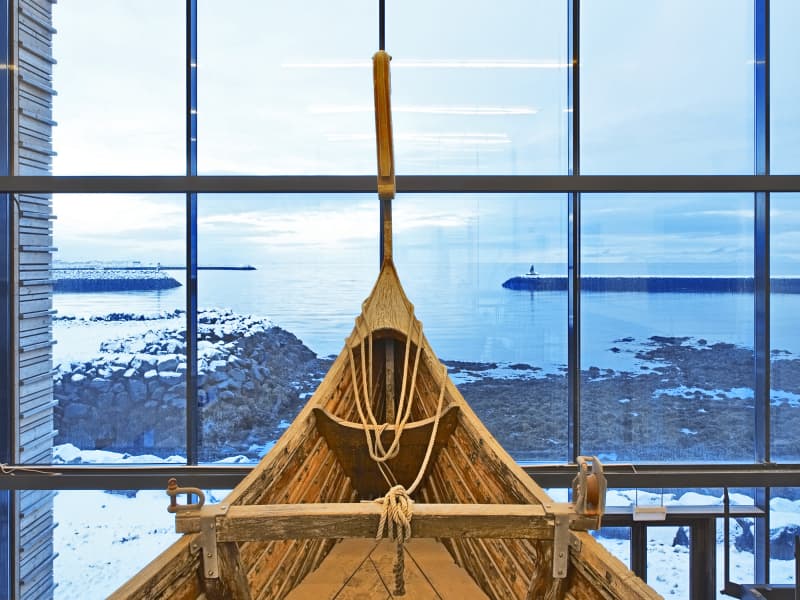
Viking World
Vikingaheimar is the home of the Viking Ship Íslendingur (the Icelander). Built in 1996, Icelander is an exact replica of the famous Gokstadship, a remarkable archaeological find of an almost completely intact Viking ship, excavated in Norway in 1882. Captain Gunnar Marel Eggertsson was inspired to build a replica of this beautiful ship based on his own background as shipbuilder and sailor. He copied the original nail for nail. In the year 2000, with a grant from the Leifur Eiríksson Commission of Iceland, he sailed from Iceland to New York, a journey of 4200 nautical miles. His voyage brought world-wide attention to Leif Eiriksson's and Bjarni Herjólfsson's discovery of America, dated, according to the Icelandic sagas, to exactly 1000 A.D. Building Icelander was an extraordinary achievement;at 23 metres long, 5.25 meters wide and with a holding capacity of 80 tons (by modern standards), it took 2 years of effort.The sail is 130 square meters and the mast is 18 meters in length. Made from pine and oak, scholars believe this was the most common type of ship in use during the Viking Age. Vikingaheimar is also a home to the exhibition The North Atlantic Viking Saga, originally shown at the Smithsonian Institution during the summer of 2000. Launched in Washington D.C. by King Hakon of Norway, and with a State Dinner at the White House, it then traveling to 6 other cities throughout North America. This exhibition, like the sailing of Icelander, celebrated the millennium anniversary of the Viking discovery of North America, shedding light on the latest scholarly research into the Norse settlement and explorations of unknown lands.Gunnar Marel and his crew of 8 left Iceland on Icelandic Independence day, the 17th of June, with a send off from the Prime Minister of Iceland. When it finally arrived in New York on October 5th-where it was greeted by First Lady Hillary Rodham Clinton and Mayor Rudolf Guiliani--the ship had made stops at 22 harbors. In addition to the festivities with kings, queens, presidents and mayors, when the ship arrived, visitors also streamed to see it while it was docked at each location, all told about 450,000 people came on board. These two fine projects, both celebrating Iceland's central role in the discovery of North America 1000 years ago by the Norse Vikings, have now found a permanent home in Vikinga Aldan (Viking Wave), the central building on the Vikingaheimar grounds. A spectacular modern building, it also offers beautiful views of the surrounding bay, Faxaflói.
These two fine projects, both celebrating Iceland's central role in the discovery of North America 1000 years ago by the Norse Vikings, have now found a permanent home in Vikinga Aldan (Viking Wave), the central building on the Vikingaheimar grounds. A spectacular modern building, it also offers beautiful views of the surrounding bay, Faxaflói.
View
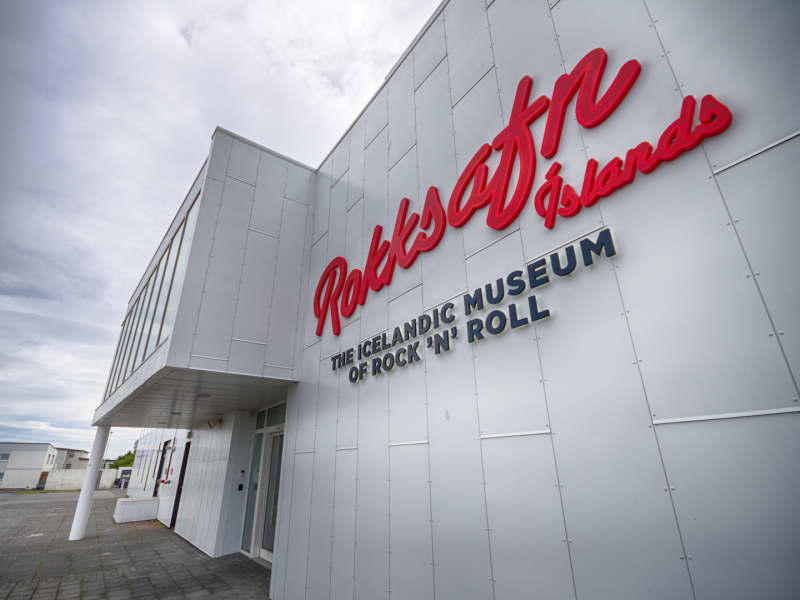
The Icelandic Museum of Rock ´n´ Roll
The Icelandic Museum of Rock ‘n’ Roll (Rokksafn Íslands) is a new museum about the history of popular music in Iceland. The museum was opened in 2014 and is located in Keflavik in Reykjanesbær, only a 5-minute drive away from Keflavik International airport.
The museum’s main attraction is a timeline of Iceland’s popular music history. Visitors who would like to dive deeper into the history can get an iPad guided tour to read more and listen to the music throughout Iceland’s history. Other attractions include the very popular sound lab where guests can try instruments such as an electric drum kit, electric guitar and electric bass. There’s also a karaoke singing booth where guests have the possibility to sing and record video of the themselves and send it directly to their email address or social media. Guests can also visit the museums’ cinema where documentaries about Icelandic music run all day long, try out interactive solutions to dive deeper into the history of featured artists such as Björk, Sigur Rós, Of Monsters and Men, Kaleo and many more, get an insight into what it is like to be an audio engineer on a mixing desk that features Icelandic music and visit the gift shop where there are books, DVD, CD’s and LP’s with Icelandic music along with various museum merchandise. At the museum guests can sit down, listen to the music and have a cup of coffee... or tea... or hot chocolate, whichever sounds good. The museum café offers coffee from Kaffitár which is a local roasterie, specializing in importing, roasting and serving the finest Arabica coffee beans.
The Icelandic Museum of Rock 'n' Roll is for everyone. For those who love Icelandic music and those who want to discover Icelandic Music.
Children find the sound lab particularly interesting along with the interactive parts of the museum.
The museum is open daily all year round except for New Year's Day, Good Friday, Easter Day, Christmas Eve, Christmas Day and New Year’s Eve. Opening times are 11am-6pm daily.
“The Icelandic Museum of Rock ‘n’ Roll is as eccentric in its telling as the tale it celebrates.” David Fricke, Rolling Stone.
View
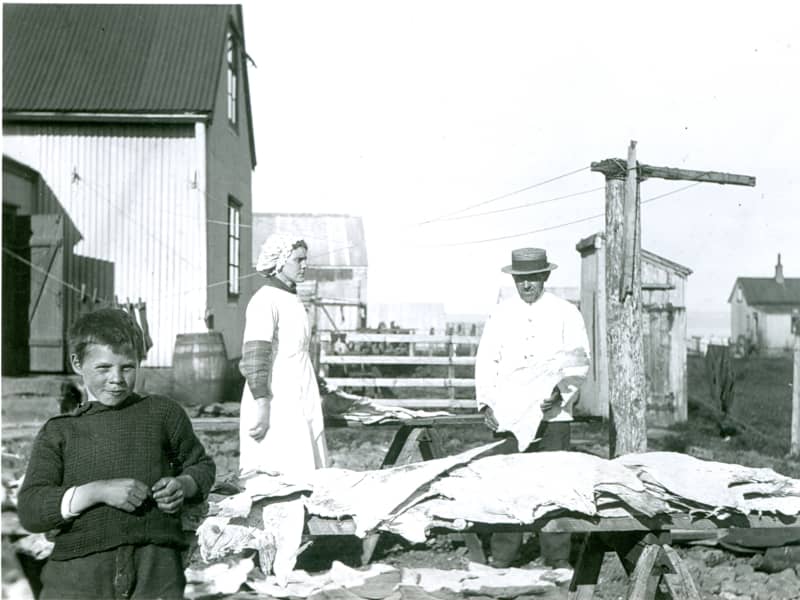
Reykjanes Museum of Heritage
Reykjanesbær Heritage Museum - Where the past is reflected in the present
Reykjanesbær Heritage Museum offers visitors the opportunity to explore the local history and find out what makes this area unique. The exhibitions look at influential factors on life and the environment through a modern-day perspective.
Reykjanesbær Heritage Museum is located in the historical Harbor House, Duusgata 2-8 in Reykjanesbær. Opening hours: Closed Mondays - open 12:00-17:00 tuesday till sunday.
Lokað er á mánudögum. Opið er þriðjudaga tl sunnudaga frá kl: 12:00-17:00.
Current exhibitions:
Trash or Treasure?
In the late 20th century and the early 21st, merchandising became common in the promotion of businesses, organisations and causes. This is an opportunity to take a walk down memory lane and reflect upon how graphics and logos have changed through time.
Countenance
The museum has a large collection of photographs that have arrived in their original frame. Photographs that are selected to be framed and displayed usually have a special value in the eyes of the owner. Fondness, pride, and longing are among the emotions that are expressed in this way.
To sew a fine seam
Sewing used to be a task for women in the home and considered a fine craft. The invention of the sewing machine was a revolution at the time. It was said that having a sewing machine was equal to one maid. Some women became known for their craftsmanship and the sewing machine made it possible for them to earn their own living.
Stekkjarkot, Innri-Njarðvík
Stekkjarkot is a reconstructed turf house, typical for the many cottages that were inhabited by fishermen and their families in the area in the 19th Century. Stekkjarkot was on rented land and the inhabitants had to rely on fishing as they were prohibited to keep livestock. The original Stekkjarkot was in use 1885-1887 and again in 1917-1923.
Stekkjarkot is open by appointment only.
View
Other (1)
| Photo gallery | Vogar | 190 Vogar | 440-6200 |
